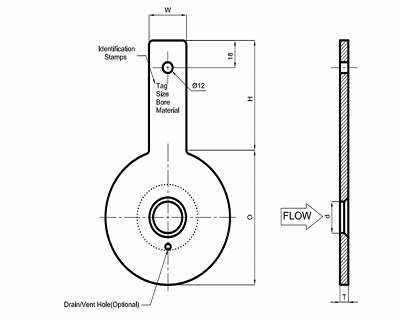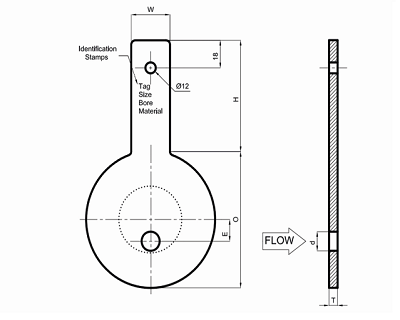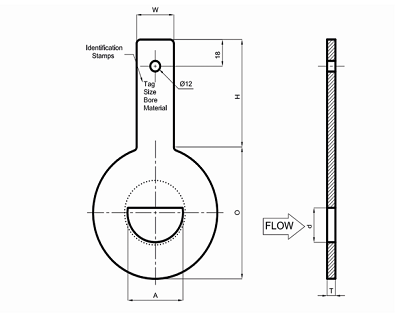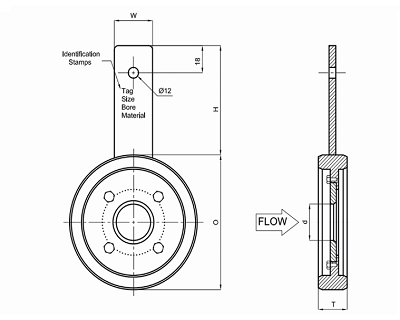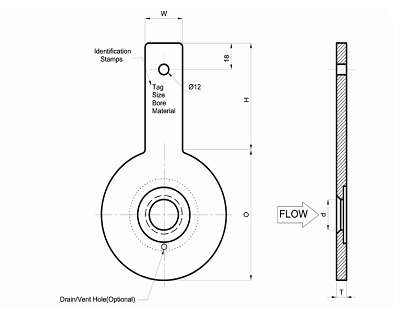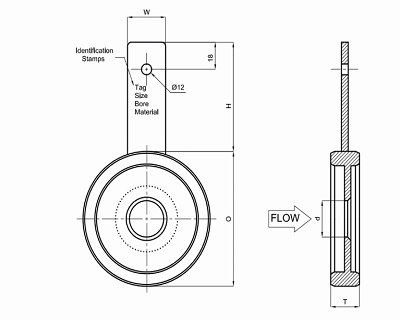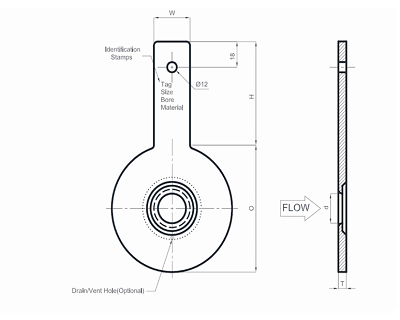Orifice Plate
An orifice plate is a thin plate with a hole in the middle. It is usually placed in a pipe in which fluid flows. When the fluid reaches the orifice plate, the fluid is forced to converge to go through the small hole; the point of maximum convergence actually occurs shortly downstream of the physical orifice, at the so-called vena contracta point. As it does so, the velocity and the pressure changes. Beyond the vena contracta, the fluid expands and the velocity and pressure change once again. By measuring the difference in fluid pressure between the normal pipe section and at the vena contracta, the volumetric and mass flow rates can be obtained from Bernoulli’s equation.
Concentric Beveled Bore
This most common bore used in the industries. This is the only type generally accepted for use in custody transfer measurement, since adequate data is not available for other bores. Used primarily for clean homogeneous liquids, gases, non-viscous fluids. The bevel is matched at 45° angle to the desired throat thickness.
Eccentric Bore
Used for measurement of flow for fluids containing solids and slurries. It is also used for vapors and Gases where condensation is present. The eccentric bore is offset to where the bore edge is inscribed in a circle that is 98% the line ID.
Segmental Bore
The segmental bore is located in the same way that the eccentric bore is. This type is used primarily for slurries or extremely dirty gases where the flow may contain impurities heavier than the fluid.
Ring Type Joint-Separate
These are available in oval or octagonal shapes. The orifice plate is universal type and snap fitted on the RTJ gasket by screws.
Conical Entrance
The conical entrance orifice provides for a lower Reynolds number limit. Also upstream edge of the orifice should be beveled at an angel of 45°.
Ring Type Joint-Integral
These are available in oval or octagonal shapes. Orifice plate is a part of RTJ gasket.
Quadrant Bore
Used for high viscous fluids such as heavy crude, syrups and slurries. It is always recommended for flow where Reynolds number is less than 10,000. The inlet is quarter of a circle and the plate thickness must be at least radius of the inlet.
Integral Orifice
When the pipe size is smaller than 1”, it is common to select an orifice installed integrally with the pressure tap hole.



